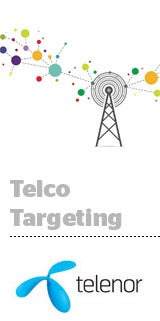When Norwegian telco Telenor acquired cross-device vendor Tapad in February 2016, it seemed comparable to Verizon buying AOL.
One year later however, Telenor is using Tapad’s tech to drive sales and customer acquisition for its own products, rather than making its data available on the open exchange. Tapad also continues to operate as a standalone business.
That’s by design, at least for the moment. While monetizing its own deterministic subscriber data is tantalizing, Telenor EVP and Chief Digital Officer Jon Gravrak said Telenor errs on the side of caution when it comes to privacy.
But Telenor is using identity – verified subscriber data – to increase its distribution power in the digital world via personalized offerings.
Telenor has more than 200 million subscribers across 13 mobile network operators (MNO) in Scandinavia, Eastern Europe and Asia. And as those customers increasingly engage through digital channels, especially in emerging markets, customer contact is moving from the physical world to the phone.
Last year, Telenor began a test to combine purchase intent data and online behavioral data for one of its largest MNOs to create microsegments for targeting. Then Telenor connected this first-party data to the open web, hoping to drive digital sales and customer acquisition by focusing on its most valued customers.
Not all telco customers are created equal, and some require more personalized attention and different messaging, said Are Traasdahl, CEO and founder of Tapad. A prepaid customer who buys one product and has a high likelihood to churn, for example, is about 10 times less valuable that a customer with a postpaid contract.
Since rolling out the initiative, roughly 20% of all new customer acquisitions for certain Telenor products now come through digital. Telenor plans to start applying the same tactics across the majority of its operators by the end of the year.
“Identity is the critical building block to make that happen,” Gravrak said.
Telcos have nearly perfect subscriber data, but only for a subset of a given population, say 25% to 30%. That’s a scale issue. But telco data can serve as an enormous truth set. Verifying users in the open ecosystem with known data let Telenor make “good assumptions” about the other 70% of the population, Traasdahl said.
Telenor is considering productizing this internal solution for other companies, including banks, utilities, insurance companies – even other telcos. Mobile carriers are usually tooth-and-nail competitors, but they’re starting to realize partnering can help boost scale and the bottom line.
AdExchanger Daily
Get our editors’ roundup delivered to your inbox every weekday.
Daily Roundup
Telenor isn’t quite ready for that. But buying its own piece of ad technology is helping Telenor power its own personalized offerings, Gravrak said.
“Operators are huge consumer brands themselves,” he said. “And consumer brands need to interact in the digital space in a personalized way.”














